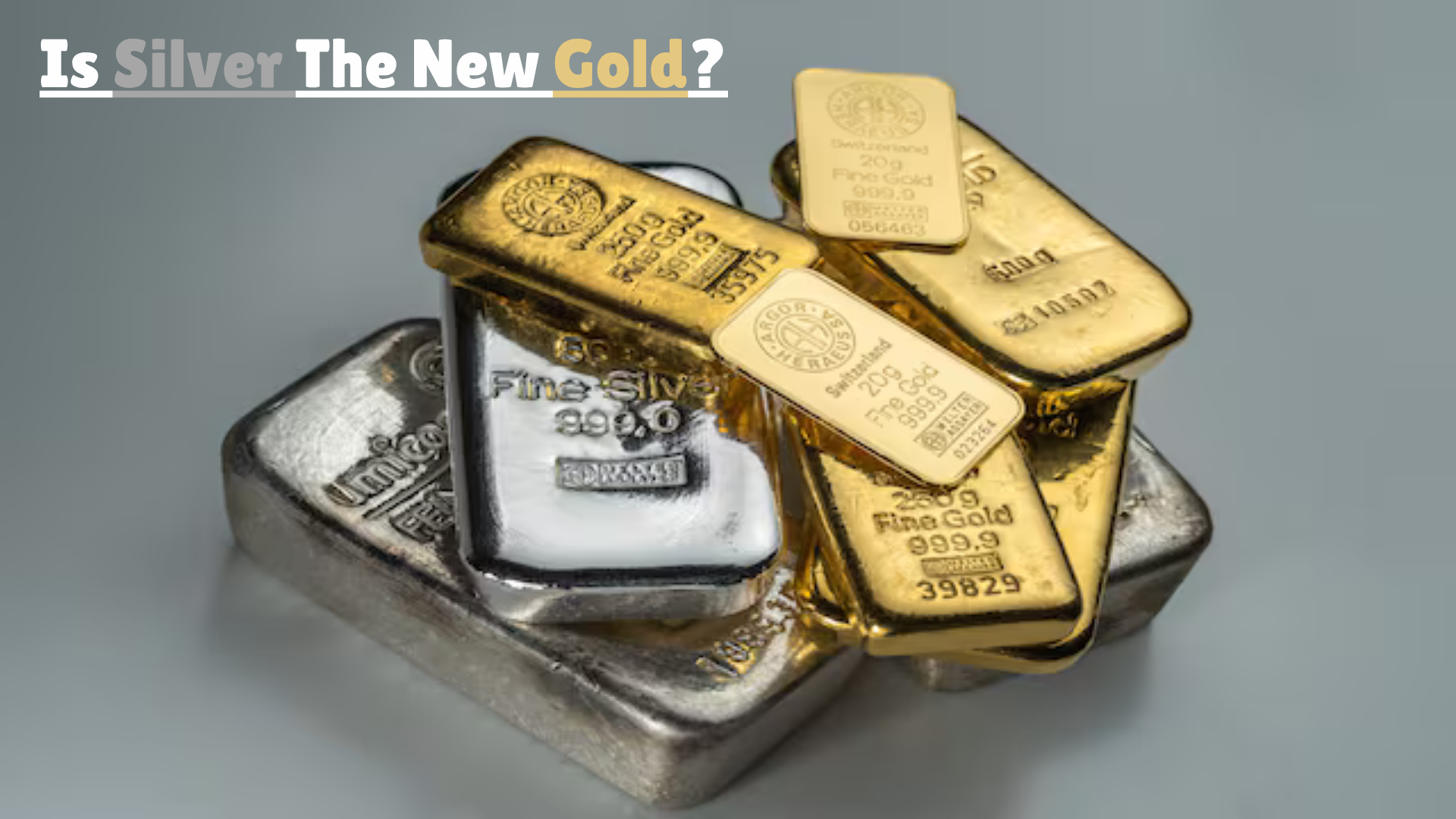Silver’s Stellar Surge: Should Investors Add the White Metal to Their Portfolios?
Silver, once considered gold’s quieter cousin, is now commanding investor attention following its extraordinary rally in 2025. Prices have soared to multi-year highs and shattered previous records, prompting a question many investors are asking: Is it time to add a touch of silver to your portfolio?
From Shadow to Spotlight
Silver has long played second fiddle to gold, but in 2025, it’s vying for the top spot. Often referred to as “the poor man’s gold”, the metal combines safe-haven appeal with industrial relevance, making it both a hedge against inflation and a play on economic expansion.
The rally has been breathtaking. Silver breached its April 2011 peak of $48.70 per ounce, touching $54.08 per ounce on October 17, 2025, in the international market. Domestically, it hit a record ₹1,76,304 per kilogram on October 14, 2025. This marked the highest-ever monthly return for the metal.
Year-to-date (YTD), silver’s over 70% gain outshines all other asset classes — equity, gold, and commodities alike.
“The metal’s outperformance relative to gold has been fuelled by a mix of safe-haven demand, a weakening dollar, lower interest rates, and robust industrial usage,”
says Kaynat Chainwala, Assistant Vice President – Commodity Research, Kotak Securities.
Chainwala adds that silver lease rates — the cost of borrowing silver in the London Bullion Market — surged after the US added it to the critical minerals list, signaling tightening supply.
The Rise of Silver ETFs
Investor enthusiasm for silver has also been reflected in exchange-traded funds (ETFs). Historically, gold and silver see demand spikes around Dhanteras and Diwali, but this year’s rally has pushed silver ETFs to record inflows.
A surge in festive buying and geopolitical uncertainty led to strong ETF demand, even forcing fund houses to temporarily suspend new subscriptions in silver fund-of-funds (FoFs) due to supply constraints and pricing dislocations.
Since SEBI’s 2021 approval for silver ETFs, the segment has grown exponentially. The first was launched in early 2022 by ICICI Prudential Mutual Fund, and within three years, silver ETFs’ assets under management (AUM) jumped from ₹2,844 crore (Oct 2023) to ₹37,518 crore (Sep 2025) — a more than 13x rise.
Returns have been equally impressive:
Average 3-year return (Silver ETFs): 39.14%
Average 3-year return (Gold ETFs): 34.86%
“Silver ETFs have opened the door for small investors to access the metal without purity, safety, or liquidity issues,”
Why Silver Is Shining Bright
1. Demand-Supply Mismatch
Global silver supply has lagged demand for five consecutive years, resulting in a persistent market deficit.
2025 Global Supply: ~1,030 million ounces
2025 Global Demand: ~1,148 million ounces
This 118-million-ounce shortfall adds to a five-year cumulative deficit of nearly 800 million ounces, according to The Silver Institute.
“As most silver is a byproduct of other metals, its supply remains inelastic even amid rising prices,”
2. Green Economy Catalyst
Silver is a critical input for clean energy technologies — from solar panels to electric vehicles (EVs) and 5G infrastructure.
Solar sector demand (2020): 83 million ounces
Solar sector demand (2025): 196 million ounces
Industrial applications now consume over 50% of global silver output, making it a metal at the intersection of sustainability and technology.
3. Investment Safe Haven
While industrial strength provides the base, investment sentiment has amplified the rally. Persistent inflation, geopolitical tensions, and a weakening dollar have pushed investors toward tangible assets.
Global silver ETF holdings reached 0.82 billion ounces, the highest since July 2022, reflecting accelerating investor participation.
A Century of Silver: Historical Context
Silver’s journey over the past 100 years mirrors the evolution of global markets:
1925: $0.69 per ounce
1962: Breaches $1 mark
1980: Rises sixfold to $35.52 amid the Hunt brothers’ squeeze
2011: Peaks at $48.20
2025: Breaches $54 — a new record
Periods of euphoria have often been followed by sharp corrections, but the 2025 rally stands out for being structurally driven by industrial demand and supply deficits, rather than speculation.
Will Silver Keep Shining?
Analysts remain optimistic, though caution about short-term volatility.
“Momentum has been supported by China’s clean energy transition and supply disruptions at Freeport’s Grasberg mine,”
A report titled Silver 2030 – The Unprecedented Rise by Motilal Oswal (Oct 2025) projects a sustained structural bull run, fueled by inelastic mine supply, green-economy demand, and depletion of above-ground reserves.
Still, silver’s heavy industrial dependence means it can underperform during economic slowdowns. Historically, it has shown greater volatility than gold, offering higher upside and deeper drawdowns.
What Should Investors Do?
Silver can play a strategic role in portfolio diversification, serving as both an inflation hedge and a growth proxy for the clean energy transition.
“Investors should resist short-term speculation and treat silver as a long-term allocation tool,”
A balanced approach — splitting precious metal allocation equally between gold and silver — can capture both monetary stability and industrial potential while mitigating risk.
In essence, silver’s dual identity — as both a safe-haven and a strategic industrial asset — makes it a rare metal with long-term appeal in an era of transformation.
For deeper insights into precious metal investing and portfolio diversification strategies, explore perspectives from Ranjit Jha (CEO) — a leading voice in wealth strategy and commodities investing.
To learn how silver ETFs, gold funds, and multi-asset solutions can enhance your portfolio resilience, connect with Rurash Financials — experts in investment advisory, asset allocation, and wealth management.

